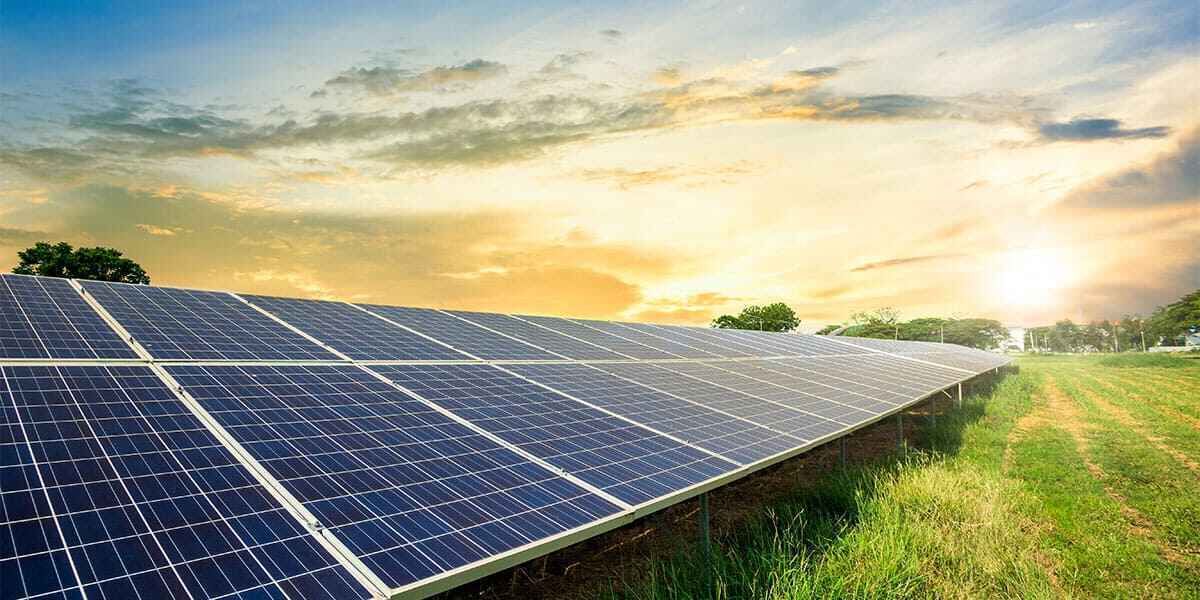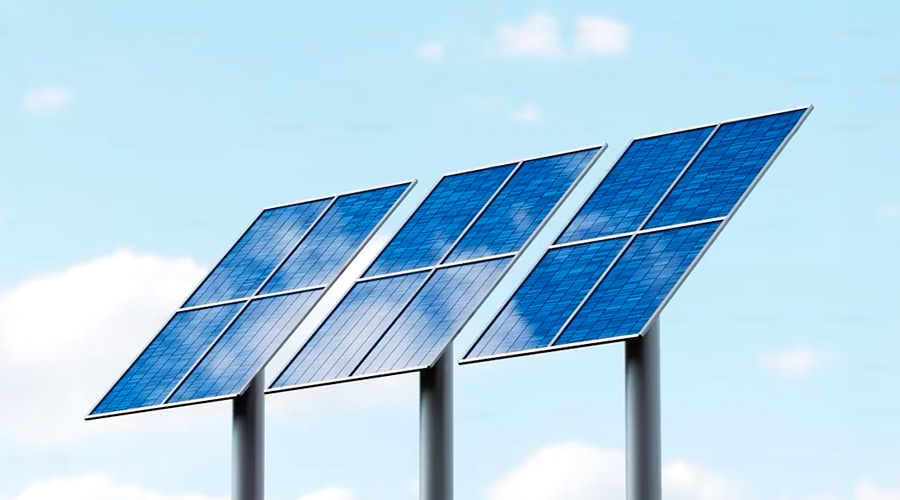What makes monocrystalline pv modules better for residential use 5 advantages
Monocrystalline panels offer higher efficiency (typically 20-23%), requiring less roof space to meet energy needs. Their superior temperature coefficient and longevity in warranties (often 25 years) make them a durable, space-saving choice for homes despite a higher initial cost per watt.
Higher Efficiency in Small Spaces
For homeowners with limited roof area, every square foot counts. Monocrystalline solar panels deliver more power per square meter compared to other types, making them the top choice for residential installations where space is constrained. For example, while a typical polycrystalline panel might achieve 17-18% efficiency, monocrystalline panels regularly reach 20-24% efficiency. This means you can generate the same amount of electricity with fewer panels, maximizing energy production even on smaller roofs.
The key advantage of monocrystalline PV modules lies in their superior power density. They are manufactured using high-purity silicon grown as a single crystal, which allows electrons to move more freely and produce more electricity from the same amount of sunlight.
A standard residential 370W monocrystalline panel typically measures around 1.7m x 1.0m (approx. 5.6ft x 3.3ft). In contrast, a polycrystalline panel of similar physical size often has a lower wattage, around 320-340W. This difference becomes critical on a compact roof.
Panel Type | Power per Panel | Number of Panels Needed | Total Area Required |
Monocrystalline | 370W | 16 | 27.2 m² |
Polycrystalline | 330W | 19 | 32.3 m² |
This 19% reduction in panel count and 16% savings in roof space is a decisive factor for urban homes with limited or partially shaded roofs. The higher initial cost of monocrystalline panels is often offset by this space optimization, avoiding the need for complex and expensive structural adjustments. You're essentially paying for more power, not more panels.
Furthermore, their high efficiency performs better under real-world constraints. If your roof has sections that are not suitable for panels (like vents or chimneys), monocrystalline's higher output ensures your overall energy goals can still be met by utilizing the available space more effectively. This efficiency also translates to a better Return on Investment (ROI), as you generate more kilowatt-hours over the system's 25+ year lifespan, accelerating payback periods. For most homeowners, achieving maximum energy independence with minimal physical footprint is the primary goal, and monocrystalline technology delivers precisely that.

Longer Lifespan and Durability
Most manufacturers offer a 25 to 30-year linear power warranty, guaranteeing that these panels will still operate at 86-92% of their original output after three decades. This exceptional longevity is due to their high-quality silicon construction and advanced encapsulation techniques, which effectively resist degradation from environmental stress.
The superior lifespan of monocrystalline panels isn't just a marketing claim; it's rooted in a lower annual degradation rate. While polycrystalline panels degrade at about 0.7-0.8% per year, high-quality monocrystalline panels see an average rate of just 0.4-0.5% per year.
Panel Type | Initial Output | Degradation Rate | Projected Output at Year 25 | Total Energy Lost |
Monocrystalline | 10,000 kWh | 0.5%/year | ~8,700 kWh (87%) | ~1,300 kWh |
Polycrystalline | 10,000 kWh | 0.8%/year | ~8,150 kWh (81.5%) | ~1,850 kWh |
This translates to a ~550 kWh annual output advantage for monocrystalline panels by the end of their warranty period. Over 25 years, this adds up to thousands of additional kilowatt-hours generated, directly boosting your savings on electricity bills and improving the system's overall ROI.
Durability is also measured by physical resilience. Monocrystalline panels consistently demonstrate higher mechanical load resistance, typically rated to withstand 5400 Pa of pressure (equivalent to a ~110 mph wind load) and snow loads of ~2400 Pa (~50 lbs/sq ft). Their robust construction, often featuring reinforced frames and tempered glass, minimizes the risk of microcracks. These microscopic cracks, often caused by hail or thermal cycling, can reduce performance and are less common in the single-crystal structure. This resilience leads to lower maintenance costs and a higher probability of the panels surviving extreme weather events without requiring expensive repairs or replacements, solidifying their status as a dependable, long-term asset for your home.
Better Performance in Low Light
Solar panels don't just operate under perfect, sunny conditions. Clouds, early mornings, late afternoons, and seasonal shading are daily realities. Monocrystalline panels consistently generate more usable power in these suboptimal conditions compared to other technologies. Their high-efficiency single-crystal silicon cells have a lower current threshold to start producing electricity, meaning they begin generating power earlier in the morning and continue later in the evening. This can add up to 30-45 minutes of extra generation time per day, which significantly boosts cumulative energy production over a year.
The superior low-light performance is primarily due to a higher monocrystalline cell efficiency and better spectral response. These cells more effectively convert the broader spectrum of light found in cloudy or shaded conditions, including blue and infrared wavelengths, into electricity.
A key metric to understand is the Low Light Performance Coefficient. While all panels see a drop in output, the drop is less severe for monocrystalline technology.
For example, a standard polycrystalline panel's output might fall by ~75% when light intensity drops from 1000W/m² (full sun) to 200W/m² (heavy overcast). A monocrystalline panel, under the same low-light condition, will typically see a smaller reduction of only ~65-70%.
Real-World Example: On a consistently cloudy day with light intensity averaging 300 W/m², a 400W monocrystalline panel might output 90-100 watts. A comparable polycrystalline panel of the same rated power would likely output only 75-85 watts. This ~15% performance advantage during several hours of the day leads to a measurable difference in daily energy production.
This advantage is quantifiable throughout the year. In regions with high seasonal cloud cover or long winters, this trait is invaluable. Data from installed systems shows that monocrystalline arrays can generate 5-10% more annual energy in northern climates compared to similarly sized polycrystalline systems, purely due to their enhanced performance in diffuse light conditions. This directly translates to higher bill savings and a more consistent power supply for your home, reducing reliance on the grid during the dimmer months of the year.
Sleek and Uniform Appearance
For many homeowners, a solar installation is a visible and permanent addition to their property's curb appeal. Monocrystalline panels are the undisputed leader in aesthetics, offering a premium, uniform look that seamlessly integrates with various architectural styles. Their signature dark black color and consistent cell appearance, achieved through the single-crystal silicon manufacturing process, create a streamlined and intentional design. This contrasts sharply with the speckled blue color and often fragmented look of polycrystalline panels, making monocrystalline the preferred choice for design-conscious homeowners and communities with strict aesthetic guidelines.
The visual superiority of monocrystalline panels is a direct result of their manufacturing process and is a significant non-technical factor influencing buyer decision-making.
l Color and Reflectivity: Monocrystalline cells have a very low reflectivity of less than 5%, absorbing more light and appearing as a deep, non-reflective black. This reduces visual glare for neighbors and creates a sophisticated, low-profile look from the street. In contrast, polycrystalline panels can have a reflectivity of 8-12%, creating a brighter, sometimes perceived as "cheaper," blue speckled appearance that can be more visually intrusive.
l Architectural Integration: The sleek profile is complemented by minimalistic framing options. Most modern monocrystalline panels feature slim black anodized aluminum frames with a thickness of only 30-35 mm. This creates a nearly flush mounting experience on dark composite shingle or standing seam metal roofs, enhancing the roof's lines rather than disrupting them. The physical uniformity extends to the dimensions; a typical residential 400W panel maintains a consistent 1.7m x 1.0m size, allowing for symmetrical and clean array layouts.
The impact on property value (PV) is tangible. Real estate market analyses have shown that homes with high-quality, aesthetically pleasing solar installations can see an average increase in appraised value of 3-4% compared to homes without solar.

Lower Long-Term Maintenance Costs
While the initial price tag of monocrystalline panels is often higher, their durability and reliability translate into significantly lower upkeep expenses over their 25+ year lifespan. The robust construction and slower degradation rate mean you'll spend less on cleaning, repairs, and lost energy production. For a typical 6kW residential system, this can add up to 1,200−2,000 in avoided maintenance and lost revenue costs over the system's life, solidifying its long-term value proposition.
The long-term savings are primarily driven by three key factors:
l Reduced Cleaning Frequency: Their smoother surface and lower dust accumulation rate require less frequent cleaning.
l Higher Resistance to Physical Damage: Their sturdy build minimizes the risk of microcracks and other failures.
l Lower Degradation-Induced Energy Loss: Slower power decline preserves revenue from energy production.
The single-crystal structure and tempered glass surface have a very low dust accumulation coefficient. This means they stay cleaner for longer, especially in arid environments. While polycrystalline panels might require a professional cleaning 2-3 times a year to maintain peak output, monocrystalline panels often only need it once a year. Each professional cleaning for a 6kW system costs 150−300, leading to an annual saving of 150−450.
Their physical resilience directly impacts repair costs. The probability of a monocrystalline panel requiring warranty replacement due to microcracks or cell failure within the first 15 years is estimated at ~0.5% per year, compared to ~1% for lower-tier panels. The average cost of a service call for diagnosis and replacement, even if covered by warranty, can range from 200−500 in labor and logistics.
Cost Factor | Polycrystalline System (Est.) | Monocrystalline System (Est.) | 15-Year Saving |
Professional Cleaning | $450/year | $225/year | $3,375 |
Repair Service Calls | 1% annual failure rate | 0.5% annual failure rate | ~$2,250 |
Total Estimated Savings | | | ~$5,625 |
Furthermore, their slower degradation rate of 0.4-0.5% per year versus 0.7-0.8% means your system produces more sellable electricity every year. For a 6kW system, this 0.3% annual output advantage equates to roughly 90-110 kWh more generation in Year 1, growing to 250-300 kWh more by Year 15.